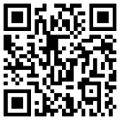Students’ Perspective about E-Learning Problems and its Benefits
Abstract
Current technological developments force prospective educators to follow and even exploit its development to support the instructor and students. Besides that, we cannot simply move on with its rapid development now. E-Learning is one of the breakthroughs in the field of education that is allegedly able to improve the quality and quality of students in learning. For that prospective educators must also understand what E-Learning is. The purpose of this research is to determine the level of understanding of students majoring in education at UIN MALIKI Malang about E-Learning and its utilization for students. In order to make adjustments to the education curriculum at the PTN level related to the issue of E-Learning itself. The author will conduct interviews indirectly with interviewees to ask about E-Learning problems and its benefits. After conducting research it shows that 54.1 percent of students have not fully understood about this issues.
Full Text:
PDFReferences
M. Aparicio, F. Bacao, and T. Oliveira, “An e-learning theoretical framework,” J. Educ. Technol. Soc., vol. 19, no. 1, pp. 292–307, 2016.
M. J. Rosenberg and R. Foshay, “E‐learning: Strategies for delivering knowledge in the digital age,” Perform. Improv., vol. 41, no. 5, pp. 50–51, 2002.
D. Zhang, J. L. Zhao, L. Zhou, and J. F. Nunamaker Jr, “Can e-learning replace classroom learning?,” Commun. ACM, vol. 47, no. 5, pp. 75–79, 2004.
M. J. Rosenberg, Beyond e-learning: Approaches and technologies to enhance organizational knowledge, learning, and performance. San Francisco, CA: John Wiley & Sons, 2005.
B. Gros and F. J. García-Peñalvo, “Future trends in the design strategies and technological affordances of e-learning,” in Learning, Design, and Technology: An International Compendium of Theory, Research, Practice, and Policy, M.Spector, B. B. Lockee, and M. D. Childress, Eds. Switzerland: Springer International Publishing, 2016, pp. 1–23.
C. Greenhow and C. Lewin, “Social media and education: Reconceptualizing the boundaries of formal and informal learning,” Learn. Media Technol., vol. 41, no. 1, pp. 6–30, 2016.
V. Arkorful and N. Abaidoo, “The role of e-learning, advantages and disadvantages of its adoption in higher education,” Int. J. Instr. Technol. Distance Learn., vol. 12, no. 1, pp. 29–42, 2015.
S. R. Harandi, “Effects of e-learning on Students’ Motivation,” Procedia-Social Behav. Sci., vol. 181, pp. 423–430, 2015.
J. Ismail, “The design of an e-learning system: Beyond the hype,” internet High. Educ., vol. 4, no. 3–4, pp. 329–336, 2001.
X. Liu, A. El Saddik, and N. D. Georganas, “An implementable architecture of an e-learning system,” in CCECE 2003-Canadian Conference on Electrical and Computer Engineering. Toward a Caring and Humane Technology, 2003, pp. 717–720.
Ö. Özyurt and H. Özyurt, “Learning style based individualized adaptive e-learning environments: Content analysis of the articles published from 2005 to 2014,” Comput. Human Behav., vol. 52, pp. 349–358, 2015.
DOI: http://dx.doi.org/10.17977/um010v2i12019p016
Refbacks
- There are currently no refbacks.
 | Letters in Information Technology Education (LITE) |

1.png)
1.png)
4.png)
1.png)
.png)
.png)

3.png)
1.png)
1.png)

3.jpg)